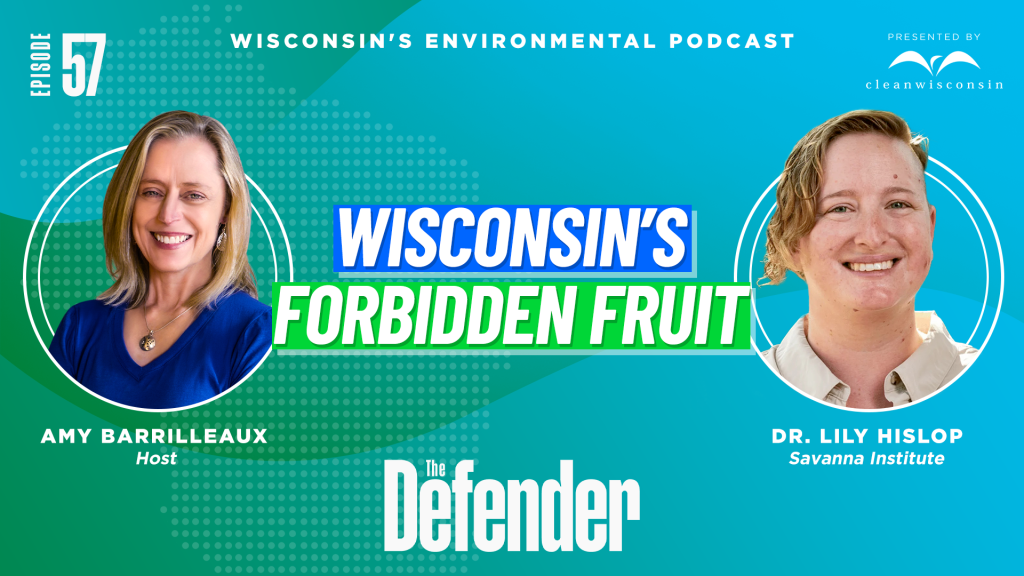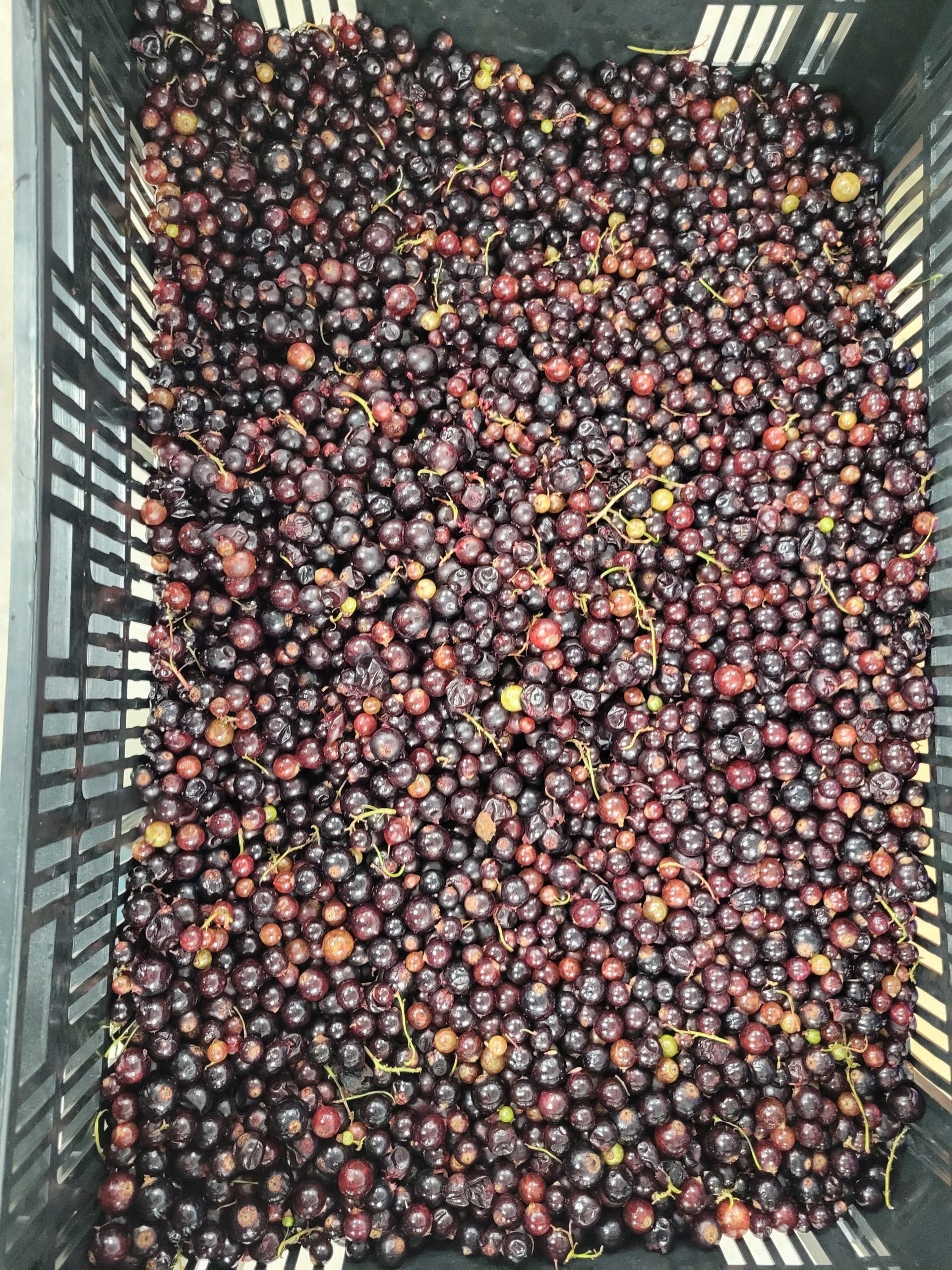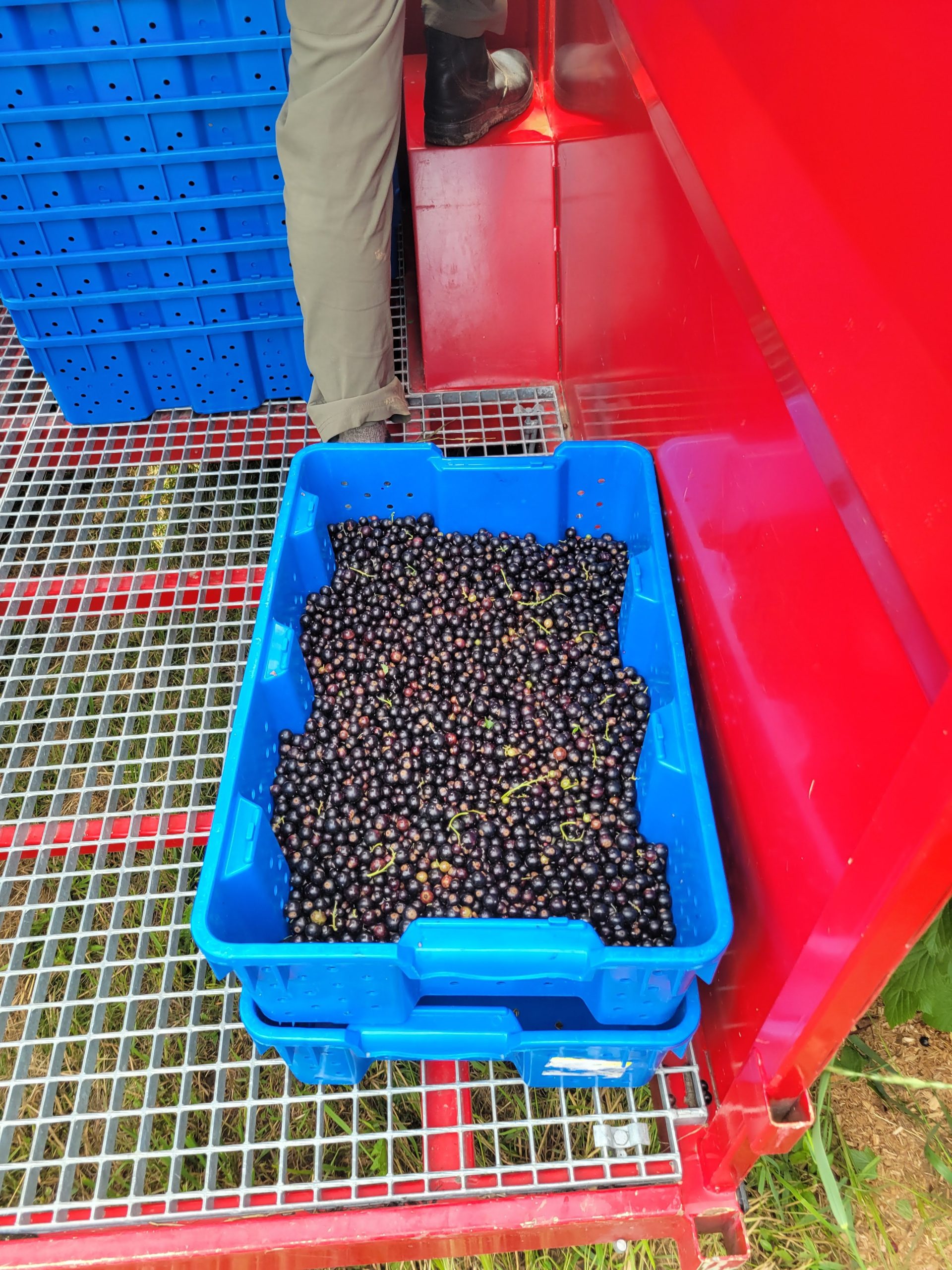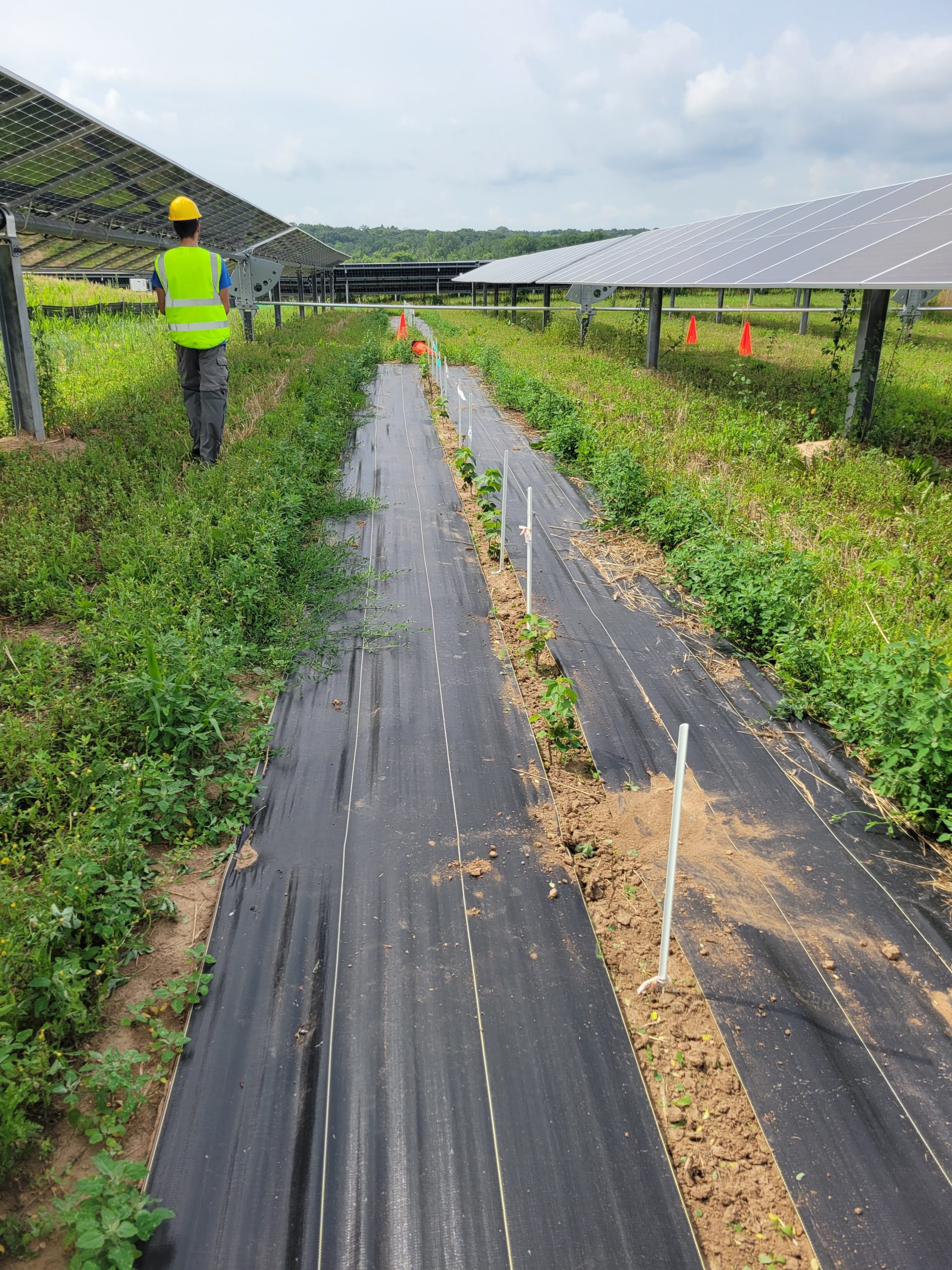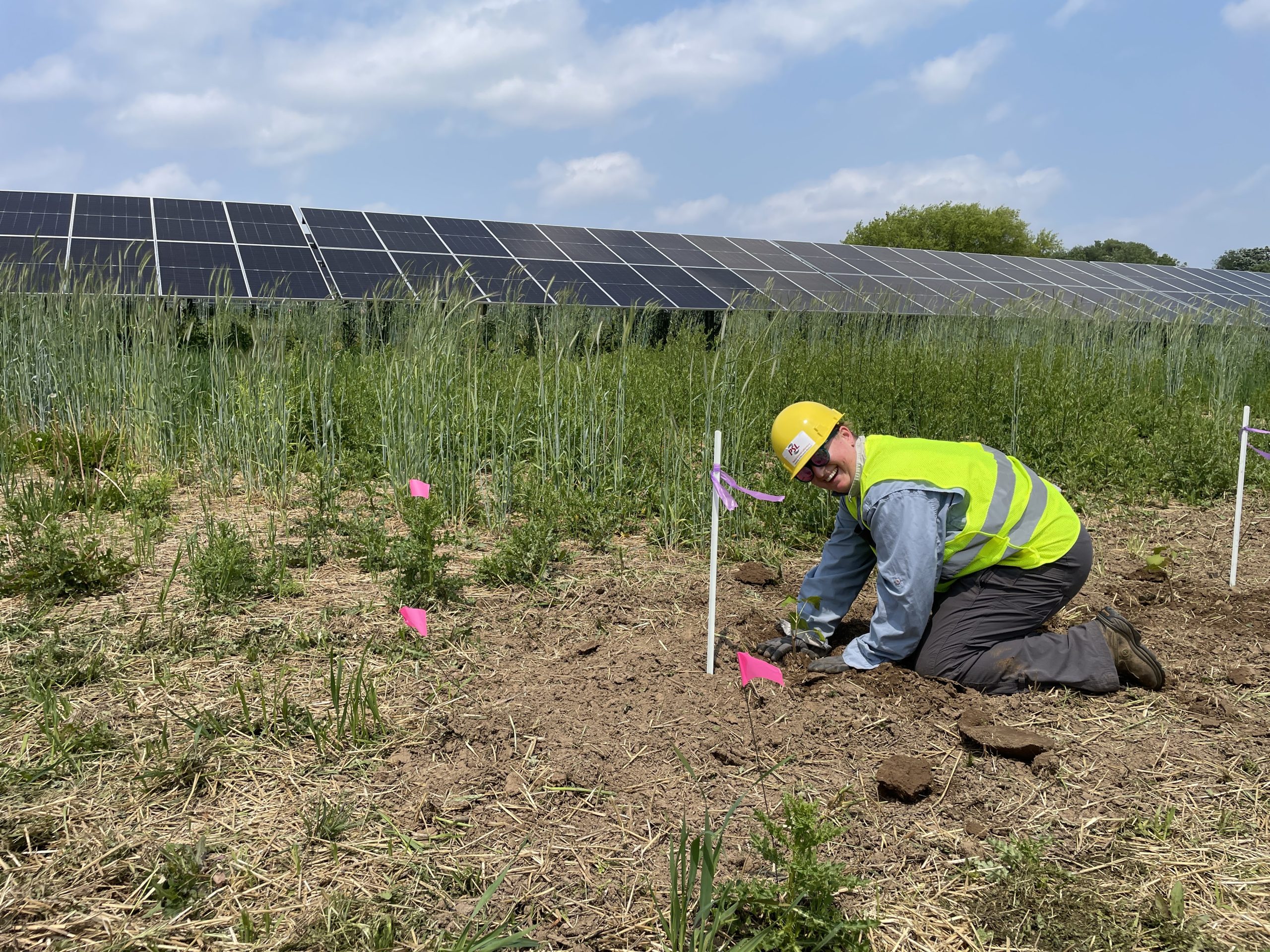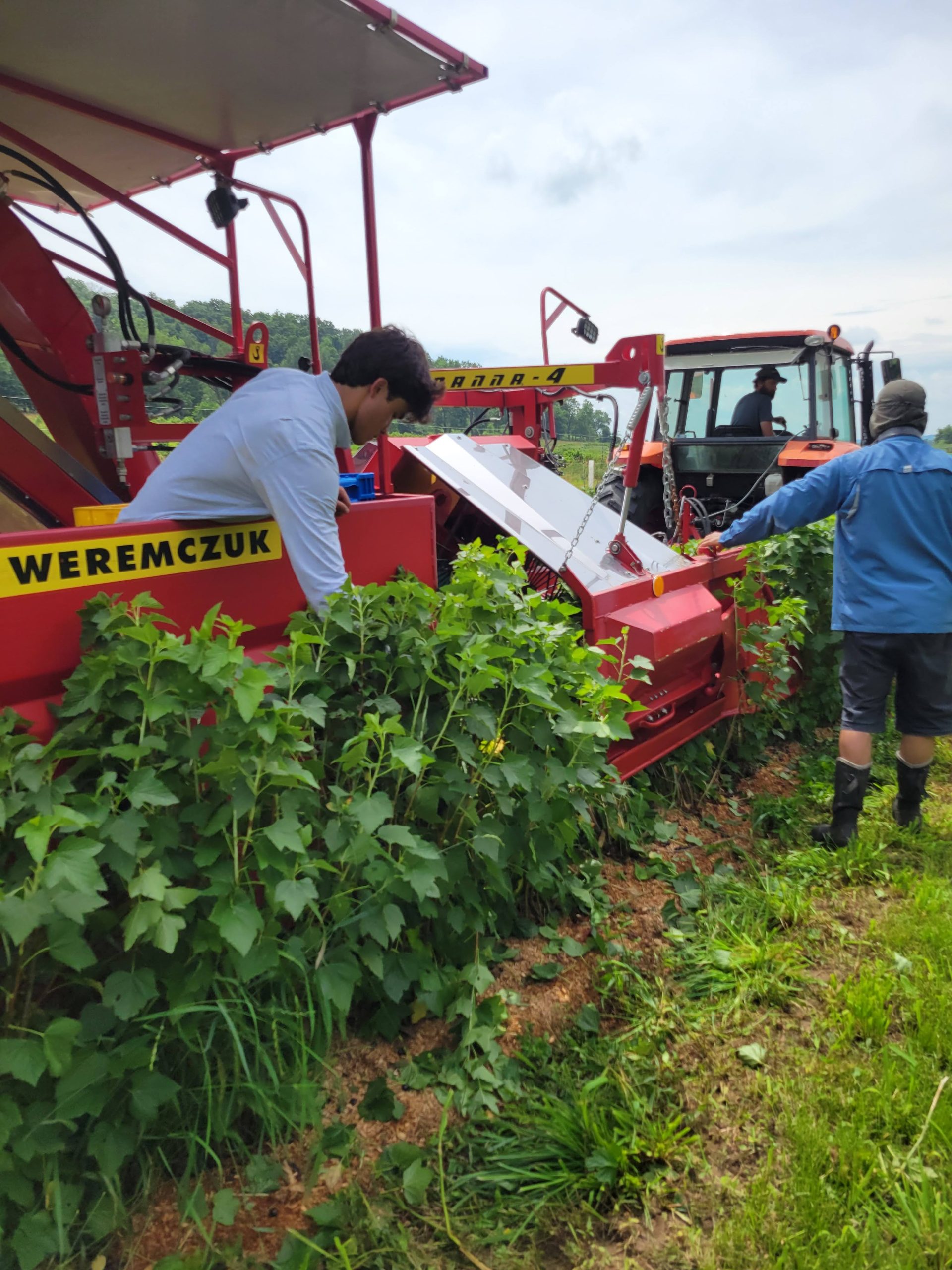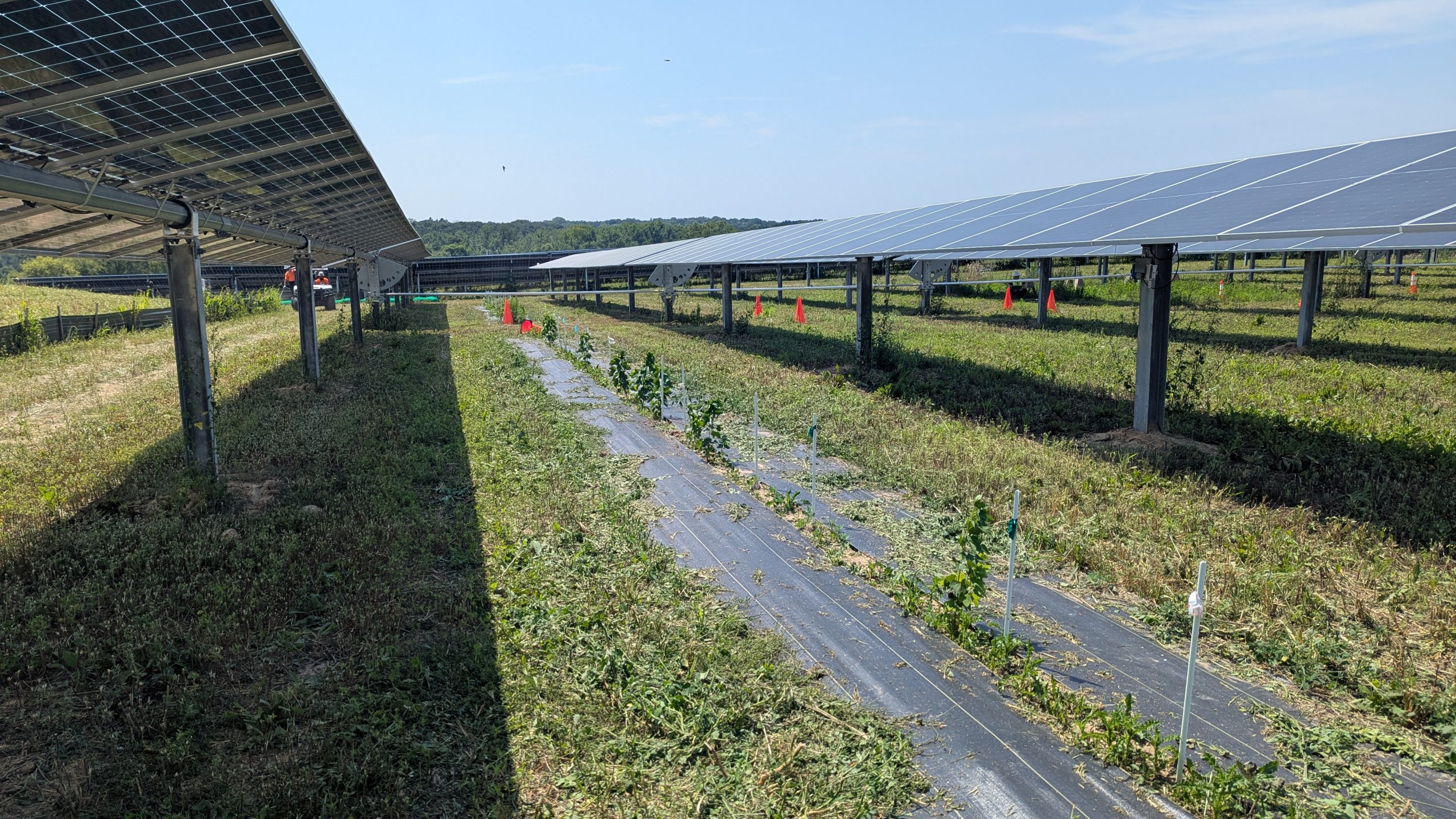Where to Listen:
Imagine a fruit that grows all over Wisconsin – in backyards, in woodlands, in gardens and out in the wild. It’s tasty, people like it. And then, they try to kill it. For good.
The amazing story of one Wisconsin food that was banned, burned, disappeared from our plates – and the comeback that’s being helped along by solar farms.
Host:
Amy Barrilleaux
Guest:
Lily Hislop, Savanna Institute
Resources for You:
Black Currants: A once-forbidden fruit
Farming for the Future: Charting a course for a new food system
Transcript:
Amy Hi there and welcome to the Defender, Wisconsin’s environmental podcast. The Defender is powered by Clean Wisconsin, your environmental voice since 1970. I’m Amy Barilleaux. Imagine a fruit that grows all over Wisconsin, in backyards, in woodlands, in gardens, and out in the wild. It’s tasty, people like it, and then they try to kill it for good. The amazing story of one Wisconsin food that was banned, burned, disappeared from our plates. And the comeback that’s being helped along by solar farms. That’s right now on the Defender. Today we have the story of the much maligned, targeted, and totally misunderstood currant. It’s a tiny fruit with a backstory full of lessons. Turns out the currant is a perennial native plant that brings plenty of benefits for our environment and is finding a new home growing among solar panels. I met Lily Hislop with the Savanna Institute at a small solar farm full of currants to find out more. I want to talk about where we’re standing. So. We’re not standing in the middle of a patch of fruit in the middle of the farm field. We are actually near some solar panels. So what is this place and why is it special?
Lily So we are at the UW Madison Kegonsa Research Campus Solar and Agriculture Pilot Project. So this is an agrivoltaic experimental station. Agrivolteic means agriculture and solar combined, where we are using this research spot put on by UW and Alliant Energy to research different applications of agriculture underneath solar panels, including trying to grow currants.
Amy Why is there interest in from the Savanna Institute in currants at all, not alone growing them here among solar panels?
Lily Currants are their species name is Ribes nigrum. It is a species of currant native to Europe and it has a fascinating flavor that we don’t have in any of the berries that we grow natively in Wisconsin. It has it’s kind of a combination of like blackberry and blueberry and pine. It has a very deep, complex, like, I don’t know, almost a sulfur quality. But it’s delicious, especially in jams. It makes the best jam that I’ve ever had. It’s so much better than blueberry jam. We so currants are within the genus Ribes, and I will be kind of referring to them interchangeably throughout this. So there’s probably 200 to 350 species of Ribes across the world. It grows in Asia and Eurasia and the northern parts of Africa and all through North America. And we have about 27 species of ribes native to the United States and North America. Including many native species in Wisconsin specifically.
Amy OK, we’ve got native currants that you’ve already got me interested in like trying to find some currant jam because I’m trying to imagine what this tastes like. Why haven’t I tasted this before? You know, this is a plant that is native to Wisconsin. Why isn’t it all over the store shelves?
Lily Yeah, absolutely. The main reason you don’t know the currant and the vast, vast majority of Americans have not had it or tasted it is because we had a federal ban for 55 years in the United States, banning all Ribes species from 1911 to 1966. And that was enough time to kind of remove it from our collective cultural memory.
Amy OK, so this is the banned fruit of Wisconsin. Basically, what led to it being kind of the outlaw fruit?
Lily Yes, OK. We kind of have to set the scene a little bit here. So in the late 1800s, there had been wide swaths of New England that had been deforested for animal grazing and clear cutting and wood for fuel and for building in our rapidly expanding country. And collectively, the government and the people of New England decided. Wait, maybe we shouldn’t have done all that deforesting. Maybe we need to reforest this area. Maybe that would be a good idea. And around that time, white pine trees were very profitable. They grew pretty fast. They made a very good quality wood. And you could get a return on profit from white pines and other five-leafed pines, such as sugar leaf, way faster than you could other traditional hardwoods. So in this effort to re-forest New England, they were going very heavily into white pine. As the tree that they were doing that with. And specifically, there was a bunch of tariff stuff where it was cheaper to send white pine seeds to Europe, grow them in nurseries in Europe, and then send the seedlings back. And there weren’t tariffs on that action. So it was really cheap to import a lot of seedlings and then plant them out. Now, the challenges, the US was investing a lot of money into white pine. And they discovered in 1906 a fungus that had come back through this transition called white pine blister rust. It is. Cronarium ribicula. I can never remember. And I can ever pronounce it very well. But it is a fungus that needs both pine trees and ribes species to finish its life cycle. It makes these spores on pine trees. And then it has to go to a ribes plant and then make the spores there. And then, it goes back to the pine trees and that’s how it reproduces. And the government had so much money in pine that they went. OK, the ribes, the currants are an acceptable loss. We don’t want to deal with them. We’re going to get rid of them entirely so we don’t lose our huge investment into pine trees. And so in 1911, the US put a federal ban on currants and ribes in general that included all the native species and all the European species. That was the first plant quarantines to be put in place in the United States. It banned the sale of plants and the movement of plants. And the US government hired large swaths of people to go out and eradicate ribes throughout the country, both from farmers’ fields without paying farmers, from people’s backyards, going through forests and ripping out native species. And they used the Civilian Conservation Corps for this. At the peak, they had 11,000 people employed in this effort. They used war internees, like German and Italian war interneas during the First World War. They used high schoolers. They used prisoners. And this was a huge effort. And the kicker is, it didn’t really work, right? Like, it turns out that these spores coming from pine trees can travel hundreds of miles. And at the same time… We don’t care about the blister rust, whatever. We’ll keep the ribes. And if the pine trees die, they die. And Canada, they’re the same thing. And Canada invested a lot into research into this fungus and research into cultivating resistant currant plants. And so their breeding programs, through the Canadian USDA equivalent, they produced several varieties of black currants that are resistant to white pine blister rest, and they don’t get it, and they do not spread it.
Amy I think there are a lot of layers of lessons here with that story. Maybe one is that trying to forcefully battle nature in that way instead of working with it is not a successful plan.
Lily Absolutely, right? It turns out that nature is really pervasive and trying to kill all of a single thing sometimes works. We sometimes successfully drive things to extinction, but it’s probably not a goal that we should be aiming for.
Amy Yeah, good point. So, okay, so the poor currants got dealt an enormous blow in the United States, but I think it explains why, maybe if you go to Europe or England, currants are kind of everywhere. They’re in scones or what have you.
Lily You have stumbled on my trap card, unfortunately. So we think of currants in scones, right, in the Americas, and if you go to the baking aisle, you can find currants there. Those aren’t currants. Oh, no. We have this problem in horticulture where we name things after things because people aren’t very creative. So, for example, peppers and pepper, right? You have cracked black pepper and you have spicy hot peppers. And those have the same name because we named spicy hot peppers after the cracked pepper because they both have a little bit of that heat to them, even though they’re like wildly different species. Currants are called ribes nigrum. They’re like closest horticultural relative is peonies. And then we have xanthi currants, which you can get in the baking aisle. Xanthii currants are grapes. Those are also called Corinth grapes. They come from a region called Corinth in Greece. And currants were named after Corinth grapes because they look kind of similar. I love that.
Amy They look kind of similar, sort of. Small blackberries, right? Okay, so lesson number one, currants native to Wisconsin are not tiny raisins.
Lily Currants native to Wisconsin are not tiny raisins. Absolutely.
Amy Okay, and lesson number two, don’t try to eradicate something on purpose because that’s not gonna be a good idea.
Lily Absolutely, yep.
Amy And so lesson number three, I think, is one that would be important to talk about. You’re from the Savanna Institute. So there’s got to be, I thing, an environmentally important reason that you care about currants. What is it?
Lily Yes, so the Savanna Institute is a agroforestry non-profit trying to put more trees on farms for a host of different ecological and economic benefits and social benefits. And I’m excited about currants as an agro forestry crop for a lot of different reasons. I think their flavor is unparalleled and there’s a niche in the culinary world of the United States that could really utilize currants. Additionally, we don’t have a very big industry for it here. So before the ban, we were growing about 7,500 acres of currants in the United States every year, which is about on par with blackberries now. So they’re not the most common fruit, but you know, you’ve eaten a blackberry. You can get access to a black berry. Now we’re growing about 450 acres of currant in the U.S., which is… Less than papaya, but more than Logan berries.
Amy And I’ve heard of one of those things, so that’s good.
Lily So like, there’s a big niche here, right? Like it is not a blueberry where we are growing a lot of blueberries very efficiently and you need to like have a lot of acreage to eke out a profit margin, right. There is some people who know what currants are and have high demand for it. And you can sell currants for a pretty good price, like $8 a pint or whatever. And since you’re kind of the only person growing it in your region, you’ll probably find your markets pretty easily. We have a buyer in New York who’s like, I would take a semi truck of currants every week if you had it for me, right? Like, so there’s where it’s a little bit of the chicken and the egg of… This is a good product and there should be demand for it but I also need to make sure I have supply for it. And we want to scale those up at the same time.
Amy So currants, well, I have a few thoughts and questions. First, I think it’s unfortunate that the other kind of currant, the grape kind is all people know because we didn’t have native currants that we were eating here for more than a half century. And so maybe there’s a little bit of a brand confusion problem, but also I think the… The concept of currants as helping solve an environmental problem is interesting because you have a crop that I’m gonna guess is pretty easy to grow around a lot of things like trees or in this case, like solar panels.
Lily Sure, yeah. Currants are pretty hardy in terms of where they can grow and what environments they can go. They don’t mind a little bit of shade. They’re a forest dwelling plant. So like growing them under solar panels or within a context of a higher story tree, like a chestnut, they kind of blend pretty well with that. And they aren’t too bad with deer predation. Deer typically don’t like to eat them, which is helpful. And I’m all for farms that just have more species on them in general. And if you’re growing currants, it can help provide a more diversified farm. I also think like, so in Europe, for example, as you mentioned, it’s much more well-known. You can probably find currants on menus, like on beverage menus about as commonly as you can find them, as you could find like lemonade at restaurants here. Most restaurants you go to, you can find a Ribena, which is a currant based beverage on a menu, right? And my theory is we don’t have that in the US because right around the time of the ban in the early 1900s was when we started as a country doing a lot more mass productions of foods and development of like confections, like jellos and sodas and hard candies and things like that, that were more mass produced and widely spread. And around that time, I feel like we kind of set our cultural palette. Like if you get a yellow candy and you don’t have a label for it, you’re probably gonna assume that it’s lemon. And if you got a purple candy, you’re gonna assume it’s grape, right? And in Europe, they had that developed with currants available as an ingredient, so they associate purple with black currant flavor, right, like the Skittles in England, the purple ones are black currants, whereas here they’re grape. Okay, you’re blowing my mind with that one. So like, we kind of set our cultural palette. Of like, these are the colors and these are flavors we associate with them in the early 1900s. And so that’s also kind of the reason we don’t have currant as a flavor in our lexicon. But we see in these days that people are excited about new flavors and they want to eat interesting and unique things and they’re willing to explore outside of the set palette, right? Like nowadays, if you have a candy that’s orange, it’s probably orange, but increasingly it might be mango, right. You wouldn’t be surprised to find a mango candy. And I think we could do the same thing with black currant.
Amy Yeah, I think what you’re saying is so interesting because I think about one of my son’s favorite flavors is blue raspberry.
Lily Is that even a thing? No, that’s not a thing but like we have so many red things already you need to differentiate, right? How do you tell the difference between a cherry and a strawberry and a watermelon and a raspberry? Well, you make the raspberry blue, I guess.
Amy Right, so I think that you’re right. There is this sort of like, well, we need a new thing. What is the new flavor out there? What do you think is the future for Wisconsin grown currants then? I mean, I know we’re here at this experimental research facility. They’re growing and I guess thriving among solar panels. Does that help you or make you feel optimistic and excited about our apparently really awesome currants?
Lily I’m so excited. I think, well, I’ve said it. I think currants are such a cool plant and there’s such good flavor but I’m really excited about the prospect of agrivoltaics as a way to expand and morph how agriculture works in Wisconsin at least on a small scale. We don’t need that many solar panels on the ground to fuel the entire country or to fuel entire state. I think like this statistic’s not gonna be right but it’s gonna be in the rough ballpark. Like if we used 0.5% of agricultural land in Wisconsin that would provide 50% of the state’s energy needs which like 0.50% of the agricultural lands, not that much. And like there’s this, at least in my world where we’re looking a lot at perennials and trees and nuts and turns out perenniums are a big investment in terms of time and money, right? It costs a lot of money. To get a tree in the ground and it also costs a lot of time before you can get a crop out of that tree, right? And currants are pretty fast in this. Like you can a, your first crop of currants probably three years after you plant a bare root plant, for example. But there’s this like challenge if you are not a land-owning person that wants to farm. It’s hard to find leases that are long-term enough that you can put trees in the ground and not feel like you’re gonna have to have them be ripped up or like be uncertain about your future with them, right? Usually leases are gonna be one to two years long not 10 years or 20 years like you really want to get. Good quality product out of a tree crop, right? And get your investment back. And agrivoltaics present a really unique opportunity where the solar company that is working with the landowner is gonna have a 20-year lease. So the land owner might be more willing to sign a longer-term lease to someone growing among the solar panels. I’ve been talking to a lot of solar companies who are required to do agri-voltaic as part of their permits. And in order to put their solar panels in the ground, they have to have something growing. The landowner is already getting a payment from something being on the land already. So the land lease itself for growing something there might be really cheap to free depending on the scenario, right? I’ve been offered a fair amount of experimental land just for free because they want something growing there and they’re gonna be managing a plant underneath it anyways whether that’s a prairie, perennial prairie system or a grazing system for sheep or whatever. They’re like excited about having plants underneath the panels. Most of these panels that are growing in Wisconsin are biphasial, which means that they get light from both the top and the backside of the panel and light reflecting off plants actually gets a pretty good energy return on the backside on the panels. It’s way better than black ground or soil, right? And usually these solar facilities, solar installations come with fence put in already and deer fence is a huge expense for someone who’s wanting to grow trees. So to have a fence that someone else has to manage, that’s really sick.
Amy So I think I can tell by talking to you how totally excited you are about the prospect of having more places to grow currants and farmers being able to really pair these things with solar and get a return on their investment and all these good things. What got you excited, I think, about plants or currants in the first place? How’d this all start for you?
Lily I got excited about plants through the total. The awe and wonder at having an organism grow like a unit of food and how cool that is. I’m like fascinated by apples and just like, it’s food that grows from a tree. How much more wonderful could that be? And I am coming at this for my love of flavor and a love of plant-based flavors. So I did my PhD in sweet corn, which was a delicious plant. It’s really, really good. And then I worked on blueberries for a while. And the range of flavors that you can get from a blueberry is really fascinating. And so I am really excited about habitat expansion as a second passion of mine. So to find an intersection where I can think and talk a lot about flavor and good food and also talk about habitat, expansion and the ways that we can have our agricultural land meet in the middle where it’s not conservation and it’s pure fish and agriculture, but it kind of has this middle ground of. Being both productive land that is also good for the animals and the insects and the soils and the water quality is so fulfilling.
Amy So you brought an example of a currant plant that does have this rust.
Lily I did. So I am a breeder for the Savanna Institute. My job is to make new kinds of currants that are adapted to Wisconsin and the Midwest at large. And one of the big challenges is to make sure they are resistant to white pine blister rust. I really don’t want to get another ban on the books. I do not want to push this envelope. So everything that I produce from my breeding program is going to be white pine, blister, rust resistant. So out in Spring Green, Wisconsin, I have a field full of 3000 currant seedlings. That I can evaluate based off of flavor and based off white pine blister rust. And I thought I was going to be doing an assay this year where I pick like a leaf off of every tree and test it for white pine, blister, rust in the lab and see what’s resistant and what’s not. But I was very fortunate with a huge infestation this year. So it was just like right there for you to see. Oh, it saved me so much time. So I went to my field yesterday and I picked a bunch of plants that have white pine and blister on them. currant plants have a very strong aroma. It’s a little bit like a little sulfury, a little fruity, a little maybe minty. And so as you like touch the plants, you can smell the currant aroma on them. And on the backside of these leaves, it looks like a cheeto puff has been dancing where there’s little orange spores that are just, you know, smattered around the leaf. You can’t really tell it from the top. There’s also a different disease on these leaves called, I think this is Septoria leaf spot. So that’s a red herring. That’s not actually the, but on the backside you can see the spores. And yeah, that’s what white pine blister rust looks like. It’s impacts currants a little bit. They get a little sick. They don’t love it. They don’t photosynthesize as well and their leaves might like shrivel up and die, but it’s survivable for them. And white pine, it kills white pines. So it should be.
Amy Should we be worried that this is out in the open? I mean, from the reaction in the early 1900s, it was like, if I saw this, I would immediately, you know, light it on fire or something, but is it as scary as all that?
Lily I think it’s something we still need to be cautious and wary about, but we do have resistant white pines now as well, in addition to a resistant currants. So these ones aren’t resistant, obviously, because this is research and I’m trying to find ones that are resistant, but all the currants that I have growing in that field in the Kaganza research site are resistant to white pine blister rust. And the white pions in the area are probably susceptible, but at least for this infestation, I keep it managed. I try and not let the spores travel very far. The spores don’t travel as far from the currants as they do from the pine trees also. They travel like thousands of feet instead of hundreds of miles. I guess they’re not tall and in the wind too. Yeah, totally. And if you really want currants in your yard or in your farm and you really wanna grow not resistant varieties, varieties that are susceptible to white pine blister rust because there are still plenty, you can manage it through. Mineral oil applications, especially during the sporifying season, you can spray mineral oil on your plants every two weeks and that really keeps the spores down from traveling.
Amy So are you optimistic that someday soonish we can go into a grocery store and among the blackberry jelly and the strawberry jelly and the blueberry and all the flavors, that there’s gonna be a place for currants in our grocery stores.
Lily Oh, absolutely. And I think you can find currants in grocery stores now if you go to the correct grocery stores. So for example, like Willie Street Co-op has black currant jelly on the shelves. Local growers do our growing currants. For example, the Land of Oohs, Land of Ohs is a farm and jam and jelly maker that has currant jelly. And I saw it at the Madison Farmers Market this year, at least one booth. I’m excited and I’m optimistic and I think this is a flavor that has, I’m starting to see the beginnings of more exposure and I am really excited for that to catch on more. And solar farm friendly. And solar far friendly and lots of other kinds of farm friendly.
Amy Thank you so much for taking the time to first meet me out here at this awesome experimental agrivoltaic site and also just explaining what I think is the fascinating story of Wisconsin currants.
Lily Yeah, thank you so for having me.
Amy And thank you for listening to The Defender. For all kinds of photos and more information about currants, take a look at the show notes or log onto cleanwisconsin.org. And if you like the show, please leave a review. It helps other people find us. I’m Amy Barrilleaux, talk to you later.
